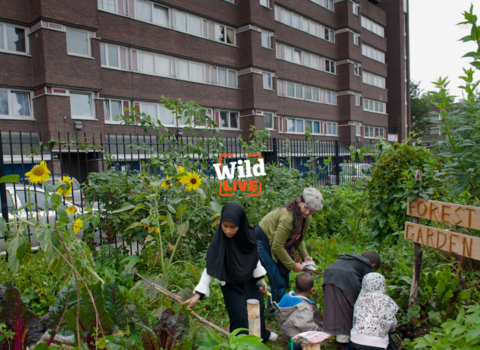One year after Biodiversity Net Gain was introduced to ensure that new developments leave the natural environment in a better state than they found it, The Wildlife Trusts are proving that restoring nature alongside development is entirely possible.
One year on, The Wildlife Trusts set to be one of the largest providers of Biodiversity Net Gain
What is Biodiversity Net Gain? (https://youtu.be/_muGlfXSrYs?feature=shared)
The Wildlife Trusts
The Wildlife Trusts are set to be one of the largest providers of Biodiversity Net Gain with five active sites now registered, and over 70 sites proposed across 46 local planning authorities – and they aim to raise the bar by setting a gold standard approach. This means Wildlife Trusts are creating new strategic areas of wildlife habitats that are supporting large-scale nature recovery projects. These wild places are protected for nature and communities in perpetuity – well beyond the mandatory 30 years.
Additionally, wherever possible Wildlife Trusts are encouraging developers to go beyond the minimum 10% gain for wildlife and striving to deliver at least a 20% gain. It is widely acknowledged that 10% is the bare minimum needed to maintain the status quo for nature. Given the catastrophic declines in nature over recent decades, clearly, greater ambition is needed – and it is vital to avoid damaging wild areas that are good for nature in the first place.
Dr Rob Stoneman, director of landscape recovery at The Wildlife Trusts, says:
This new approach to development is successfully funding nature’s recovery and Wildlife Trusts across the country are working with developers to design thriving communities surrounded by beautiful, natural green space.
"We need to address the nature and climate crises while also ensuring that new homes can be built. With the UK Government’s plan to build 1.5 million homes, biodiversity net gain is a step in the right direction and must remain a central part of the planning process.
“Across England, Wildlife Trusts are also creating habitat banks – wildlife-rich sites available for developers to invest in. These support nature recovery, fund conservation efforts and provide community access to stunning wild places. We’re calling on the UK Government to expand mandatory biodiversity net gain to Nationally Significant Infrastructure Projects – this would ensure that our natural infrastructure is re-established alongside energy and transport infrastructure.”
Nature-rich areas are known to be better places to live and work, improving people’s health and well-being. If developers are not able to enhance wildlife on-site, they can meet the requirement by purchasing biodiversity units, creating wildlife habitat, elsewhere.
The Wildlife Trusts have five active Biodiversity Net Gain sites and over 70 sites being brought forward for restoration. The active ones are:
-
Ludgershall Meadows, Buckinghamshire: a patchwork of meadows across the Upper River Ray floodplains which holds a small breeding population of locally scarce wading birds such as lapwing and curlew.
-
Duxford Habitat Bank, Oxfordshire: at the heart of the Upper Thames conservation area. Plans to restore the river, floodplain and precious wetland habitats will make it a haven for wildlife, complementing the landscape-scale conservation work nearby.
-
Wild Whittington, Derbyshire: a new rewilding project where new habitats will be created, with areas of woodland, scrub, wetland and open areas of grassland to establish a vital green corridor in the region to support nature’s recovery in Chesterfield and the surrounding areas.
-
Flack Field, Cambridgeshire: Beside Fulbourn Fen Site of Special Scientific Interest (SSSI) and close to Fleam Dyke SSSI, this place is strategically located within the emerging Local Nature Recovery Strategy.
-
Fleam Dyke, Cambridgeshire: Another site which is strategically located within the emerging Local Nature Recovery Strategy. It will create a more sustainable management unit to support the adjacent SSSI and helping to support species abundance and climate resilience.
For more information visit our webpage on Biodiversity Net Gain.

Paul Harris/2020VISION
How can we build 1.5 million homes and solve the climate, nature and health crises?
Sign up to attend The Wildlife Trusts’ Wild LIVE, an online panel discussion on Tuesday 18th February at 7pm – 8.30pm.
